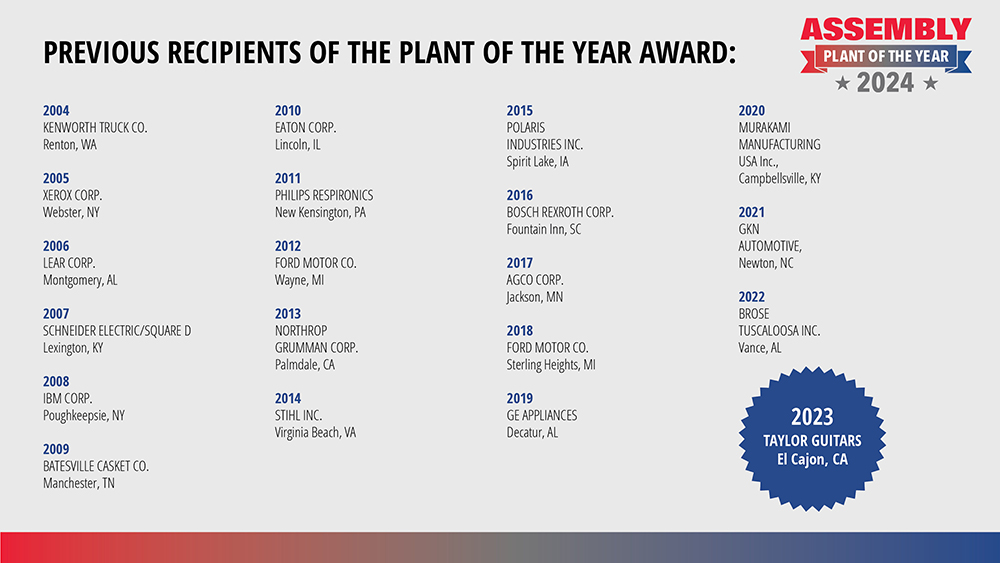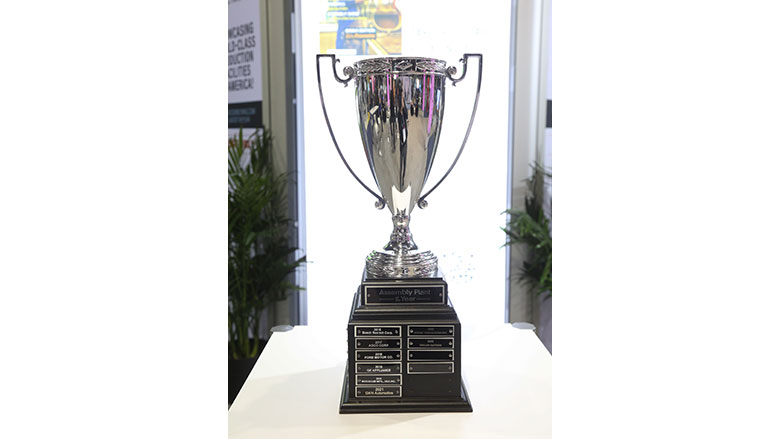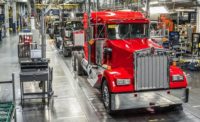A brawny Kenworth W900 truck graced the cover of the November 2004 issue of ASSEMBLY, honoring the inaugural recipient of the magazine’s Assembly Plant of the Year award. Back then, the world was a much different place. No one thought that same plant in Renton, WA, would be building battery-powered heavy-duty trucks two decades later.
In 2004, internal combustion engines ruled the world. Artificial intelligence was only found in science fiction movies. Facebook had just been invented and no one ever heard of Instagram, TikTok or Zoom.
George W. Bush was elected to a second consecutive term in the White House, beating Senator John Kerry. The Boston Red Sox won the World Series for the first time since 1918, while the Pittsburgh Steelers and New England Patriots were dominating the gridiron. “Shrek 2” was the year’s top film and Usher crushed the music charts with songs like “Yeah!” and “Burn.”
In the manufacturing world, Ford Motor Co. unveiled its reborn Rouge plant featuring the auto industry’s most flexible and environmentally friendly assembly line. Less than 100 miles away, the last Oldsmobile rolled off GM’s assembly line in Lansing, MI.
Radio Flyer Inc. closed its old factory on the West Side of Chicago and moved production to China. And, “Offshore Assembly Challenges and Opportunities” was the title of an educational session at the 25th annual Assembly Technology Expo in Rosemont, IL.
A sharp uptick in offshoring activity 20 years ago prompted ASSEMBLY to launch an award recognizing the best facilities in American manufacturing. The goal was (and still is) to “showcase world-class production facilities in America, and the people, products and processes that make them successful” and to “identify a state-of-the-art facility that has applied world-class processes to reduce production costs, increase productivity, shorten time to market or improve product quality.”
Unlike other award competitions, the Assembly Plant of the Year only honors one facility. Unfortunately, that means many large and small facilities worthy of recognition have been left on the sideline.
The list of companies that fall into that category is quite impressive. It includes Boeing, BorgWarner (Delphi), Brunswick (Mercury Marine), Caterpillar, Cummins, Daimler Trucks, Deere, Faurecia, General Dynamics (Gulfstream Aerospace), General Motors, Harley-Davidson, Komatsu, La-Z-Boy, Lockheed Martin, Magna, Medtronic, 3M, Mitsubishi, Tenneco (Federal-Mogul), ThyssenKrupp and Whirlpool (Maytag).
Many smaller manufacturers have also been nominated for the award, including companies as diverse as Alto-Shaam, Amtrol, Electromed, Grand Rapids Chair Co, Itron, Jarvis Lighting, Rosenboom and Watlow.
The proud recipients of the Assembly Plant of the Year award have made a variety of products, such as car seats, chainsaws, caskets, computers, fighter jets, motorcycles, refrigerators, respirators and tractors. Their facilities have comprised both high-volume, low-mix and low-volume, high-mix production lines.
Those manufacturers have come from every corner of the United States, including factories located in Alabama, California, Illinois, Iowa, Kentucky, Michigan, Minnesota, New York, North Carolina, Pennsylvania, South Carolina, Tennessee, Virginia and Washington. Manufacturers in Alabama have won the award three times (2006, 2019 and 2022), while California, Kentucky, Michigan and New York account for two winners each.
All 20 facilities that have received the Assembly Plant of the Year award are still going strong today. They have each withstood the challenges of Covid, employee shortages, new technology and changing economic conditions by maintaining a passion for innovation and a hunger for continuous improvement.
Who will be next? If your facility is worthy of recognition, or you know one that is, consider nominating it for the 2024 Assembly Plant of the Year award!

Click to enlarge!


